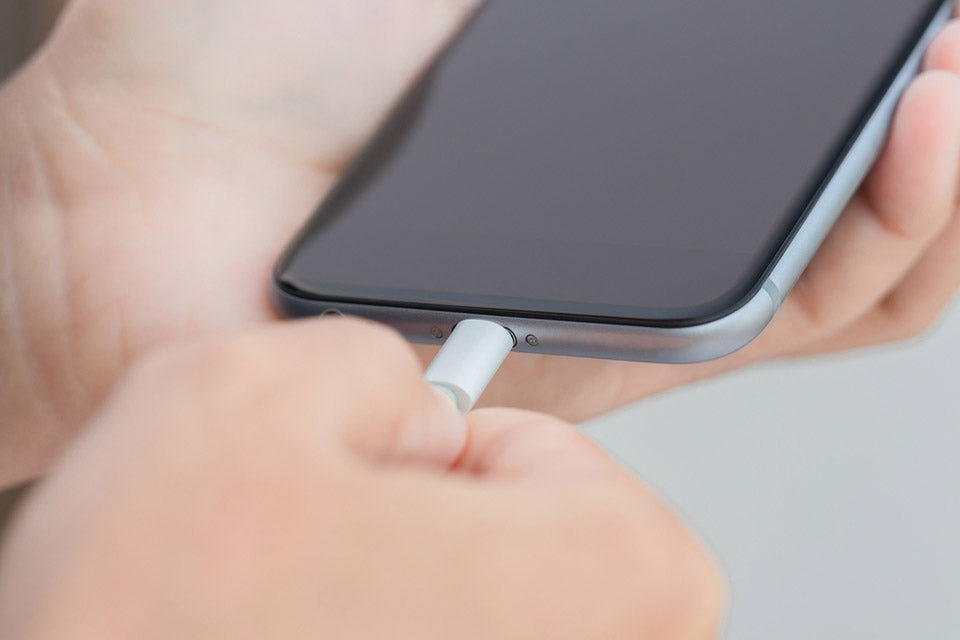Let's assume a smartphone is connected to a USB port/charger. When I use that phone, will it consume power from the built-in battery or from the USB port/charger? One day, when the battery life is over, will the phone still work if connected to a USB port/charger?
Question Does a phone consume battery power when connected to a USB port/charger ?
- Thread starter Matthew Wai
- Start date
-
- Tags
- smartphone battery
You are using an out of date browser. It may not display this or other websites correctly.
You should upgrade or use an alternative browser.
You should upgrade or use an alternative browser.
Colif
Win 11 Master
When I use that phone, will it consume power from the built-in battery or from the USB port/charger?
Yes, but only if it remains plugged in once at 100%, as the battery stops the charging action, phone will drop below 100 and it might start charging again

Fact or Fiction: Can You Overcharge Your Phone?
Worried about overcharging your phone? Learn the truth! Explore battery myths and discover best practices for healthy phone charging. Read our guide now!
One day, when the battery life is over, will the phone still work if connected to a USB port/charger?
Not many phones have removable batteries now. Not all phones will work without a battery, I assume dead would be seen as no battery - https://electronics.stackexchange.c...-smartphones-cannot-be-used-without-a-battery
So 2nd question has an uncertain answer... maybe.
Exploding PSU
Distinguished
Let's assume a smartphone is connected to a USB port/charger. When I use that phone, will it consume power from the built-in battery or from the USB port/charger? One day, when the battery life is over, will the phone still work if connected to a USB port/charger?
I have several phones with dead batteries from various brands (old Nokias all the way to iPhones and Androids) and some portable consoles, and none of them work without their batteries / with dead batteries
Unlike laptops where it would still run if their batteries were removed as long as they're plugged in.
hotaru.hino
Glorious
I would argue that the phone switches to external power once it has it, as long as the charger can supply sufficient voltage.
I'm not an expert in this area, but I do know the gist of battery charging. Charging a battery requires applying a high enough voltage on the positive side of the battery. Once you have enough voltage, current can flow through the battery, which is then captured by the battery. If you apply voltage through on the negative terminal, the battery acts as a voltage adder. Since the side of the battery where current normally flows out of is no longer doing that role, it doesn't really make sense for the battery to be powering the device anymore.
So that leaves the question: why is it sometimes if you plug in a shoddy charger, the battery level drops still? The voltage of the charger depends on the limits of its output. If the charger starts running up against its limits, the voltage starts dropping. Once the voltage drops far enough, it's no longer able to shove current into the battery. Note that if two voltage sources connected in parallel have different voltages, the lower one acts more like a load than a voltage source. Hence why the battery starts powering the device rather than the charger.
I'm not an expert in this area, but I do know the gist of battery charging. Charging a battery requires applying a high enough voltage on the positive side of the battery. Once you have enough voltage, current can flow through the battery, which is then captured by the battery. If you apply voltage through on the negative terminal, the battery acts as a voltage adder. Since the side of the battery where current normally flows out of is no longer doing that role, it doesn't really make sense for the battery to be powering the device anymore.
So that leaves the question: why is it sometimes if you plug in a shoddy charger, the battery level drops still? The voltage of the charger depends on the limits of its output. If the charger starts running up against its limits, the voltage starts dropping. Once the voltage drops far enough, it's no longer able to shove current into the battery. Note that if two voltage sources connected in parallel have different voltages, the lower one acts more like a load than a voltage source. Hence why the battery starts powering the device rather than the charger.
Most phone batteries (and likely ones from portable consoles) have a thermal resistor that the device reads to make sure the battery is safe to use. They'll refuse to boot if it's not detected. You can fake this out by adding a resistor of an appropriate resistance.I have several phones with dead batteries from various brands (old Nokias all the way to iPhones and Androids) and some portable consoles, and none of them work without their batteries / with dead batteries
Unlike laptops where it would still run if their batteries were removed as long as they're plugged in.
I just found the following article:
https://www.makeuseof.com/swollen-battery-replace-run-smartphone-without-battery/
Run Your Smartphone Without a Battery!
https://www.makeuseof.com/swollen-battery-replace-run-smartphone-without-battery/
Run Your Smartphone Without a Battery!
TRENDING THREADS
-
-
-
-
-
Discussion What's your favourite video game you've been playing?
- Started by amdfangirl
- Replies: 4K
-

Space.com is part of Future plc, an international media group and leading digital publisher. Visit our corporate site.
© Future Publishing Limited Quay House, The Ambury, Bath BA1 1UA. All rights reserved. England and Wales company registration number 2008885.
